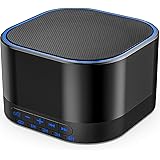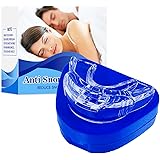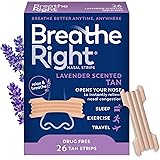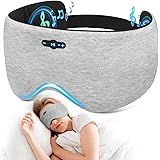Are you struggling to achieve truly restful sleep, especially with the pressures of modern life and demanding work schedules? The challenges of getting a good night’s rest are more prevalent than ever, with many finding their sleep patterns disrupted. Fortunately, innovative sleep tech and mindful practices are emerging as powerful allies in the quest for better sleep quality.
As highlighted in the video above, even dedicated frontline care workers, like the nurses at Queen Elizabeth Hospital Birmingham, face significant hurdles in maintaining healthy sleep. Their experiences mirror a wider societal issue, where irregular shifts and high stress levels make consistent, restorative sleep a luxury. This situation underscores the critical need for effective strategies to improve sleep quality and mitigate the effects of sleep deprivation.
Exploring various solutions from smart lights to meditation apps and advanced tracking devices can help uncover personalized paths to achieve better sleep. Let’s delve deeper into how these tools and techniques can transform your nightly routine, moving beyond the simple desire for more sleep to cultivating genuinely restorative rest.
Embracing Light Therapy: A Gentle Path to Better Sleep
Light plays a fundamental role in regulating our circadian rhythm, the body’s natural sleep-wake cycle. Disruptions to this cycle often lead to significant sleep problems, making it difficult to fall asleep or wake up feeling refreshed. Incorporating light therapy into your routine can help synchronize your internal clock, promoting healthier sleep habits.
One notable example from the video is the Casper Glow Light, a magical bedside lamp designed to ease your transition into sleep and wakefulness. This device simulates a sunset, gradually dimming over a customizable period, from 15 minutes up to 90 minutes. This gentle dimming process signals to your brain that it’s time to unwind, encouraging natural melatonin production and preparing your body for rest.
Conversely, these smart lamps can also mimic a sunrise, slowly brightening to gently rouse you from slumber. Waking up with natural light can significantly reduce the grogginess associated with abrupt alarms, preventing that “jet lag” feeling. This approach helps align your body with natural light cycles, fostering a more natural and less stressful awakening.
Beyond its primary functions, the Casper Glow Light offers practical features for nighttime navigation. A simple wiggle can activate a subtle glow, perfect for those middle-of-the-night trips to the bathroom without fully disrupting your sleep. While the price of £109 for a single unit might seem substantial, the investment in regulated light exposure can significantly enhance your overall sleep wellness.
Understanding the Science Behind Light and Sleep
Our bodies are intrinsically linked to light, with specialized cells in our eyes detecting light and sending signals to the brain. Bright light, especially blue light, can suppress melatonin production, keeping us alert and awake. Conversely, dimming lights signal the body to produce melatonin, the hormone crucial for initiating sleep.
Utilizing a dedicated light source like the Casper Glow Light offers a controlled environment to manage this essential biological process. Unlike standard lamps, which can be harsh and disruptive, these devices provide a soft, calming light spectrum that supports natural sleep onset. This focused approach to light exposure is a key component of effective sleep tech gadgets aimed at improving sleep health.
Mindfulness and Meditation: Unlocking Deeper Relaxation
While cutting-edge gadgets offer technological solutions, the power of the human mind remains an unparalleled tool for achieving restful sleep. Mindfulness and meditation practices have gained widespread recognition for their ability to lower stress, curb anxiety, and significantly improve overall sleep quality. These techniques provide accessible, often cost-effective, alternatives or complements to physical devices.
The Calm app, a leading platform for sleep, meditation, and relaxation, exemplifies how digital tools can guide users toward inner peace. This application features a rich library of content, including guided meditations, soothing music, and renowned “sleep stories” read by celebrities like Matthew McConaughey and Stephen Fry. These narratives transport listeners into a relaxed state, diverting attention from daily worries and gently leading them towards sleep.
Many users, including those in high-stress professions, find the structured guidance within the app incredibly beneficial. Even a brief five-minute deep sleep body scan or a focused breathing exercise can prepare the mind and body for rest. The variety of narrators and soundscapes ensures that there is something for everyone, making the journey to peaceful sleep a more personal and engaging experience.
The Benefits of Integrating Mindfulness into Your Routine
Mindfulness training teaches you to observe your thoughts and feelings without judgment, reducing the mental chatter that often keeps us awake. Regular meditation practice has been shown to decrease cortisol levels, the stress hormone, and promote the production of feel-good neurotransmitters. This biochemical shift makes falling asleep easier and contributes to a deeper, more uninterrupted sleep cycle.
Beyond bedtime stories and meditations, the Calm app offers a plethora of breathing exercises and yoga videos designed for mindful movement and de-stressing. These holistic practices address the root causes of poor sleep, such as stress and anxiety, by fostering a calm and centered state of mind. Embracing such apps allows for a flexible and affordable way to enhance sleep hygiene practices, requiring only a monthly or yearly subscription to unlock a wealth of resources.
Advanced Sleep Tracking: Gaining Insights for Better Sleep
Understanding your sleep patterns is the first step towards improving them. Advanced sleep tracker devices offer detailed analytics, providing invaluable insights into what happens after you close your eyes. These tools move beyond simple “time in bed” measurements to reveal the complex architecture of your sleep cycle, helping you identify areas for improvement.
The Withings Sleep sensor mat, featured in the video, represents a discreet yet powerful piece of innovative sleep tech. Placed unobtrusively under your mattress, this sensor mat monitors crucial physiological data throughout the night. It tracks respiratory rate, heart rate, and movement pressure, utilizing proprietary algorithms to differentiate between various sleep stages: deep sleep, REM sleep, and light sleep.
Every morning, the mat transmits its data to a dedicated app, presenting you with a comprehensive sleep profile and a “sleep score.” This score provides an immediate, quantifiable measure of your night’s rest, with a higher score indicating better sleep quality monitoring. Crucially, the app doesn’t just present data; it also offers personalized tips and suggestions to optimize your sleep potential.
Actionable Insights from Your Sleep Data
Imagine knowing precisely when you enter deep sleep or how often your breathing is interrupted. This granular data allows for targeted interventions, whether it’s adjusting your bedtime, incorporating a calming routine like drinking hot milk, or ensuring total darkness in your sleep environment. For individuals with erratic schedules, like shift workers, understanding the *quality* of even short sleep periods becomes paramount.
The Withings Sleep mat can even detect snoring, identifying disruptions to your breathing pattern that might be affecting your sleep quality and potentially indicating conditions like sleep apnea. While the concept of a “sleep score” might initially seem anxiety-inducing for some, its ultimate goal is empowerment. By translating complex biological data into understandable metrics, these trackers provide actionable guidance to maximize the restorative power of your sleep, helping you make informed decisions about your sleep health strategies.
Navigating Sleep Challenges: Especially for Shift Workers
The unique demands placed on shift workers, such as nurses Claire, Cherie, and Sean in the video, highlight a significant demographic facing chronic sleep disruption. Irregular hours, often involving night shifts, directly conflict with the body’s natural circadian rhythm, making consistent, quality sleep extremely difficult. These individuals often prioritize the *quality* of their sleep over the *quantity*, understanding that even a few hours of deep rest can make a difference in their demanding roles.
For these professionals, and anyone dealing with inconsistent schedules, the combination of smart sleep tech solutions and mindfulness practices offers a multifaceted approach. Light therapy devices can help simulate natural day-night cycles, encouraging sleep when it’s dark outside but their body expects light, and vice versa. Similarly, meditation apps provide immediate tools for stress reduction and mental unwinding, which is crucial after a high-pressure shift.
Sleep trackers, though sometimes seen as a luxury, become essential diagnostic tools for shift workers. They can pinpoint when their sleep is most fragmented or where improvements can be made, even within a non-traditional sleep window. Understanding their personal sleep patterns can empower them to create micro-routines that maximize restorative rest, proving that improving sleep quality is achievable even under challenging circumstances.








